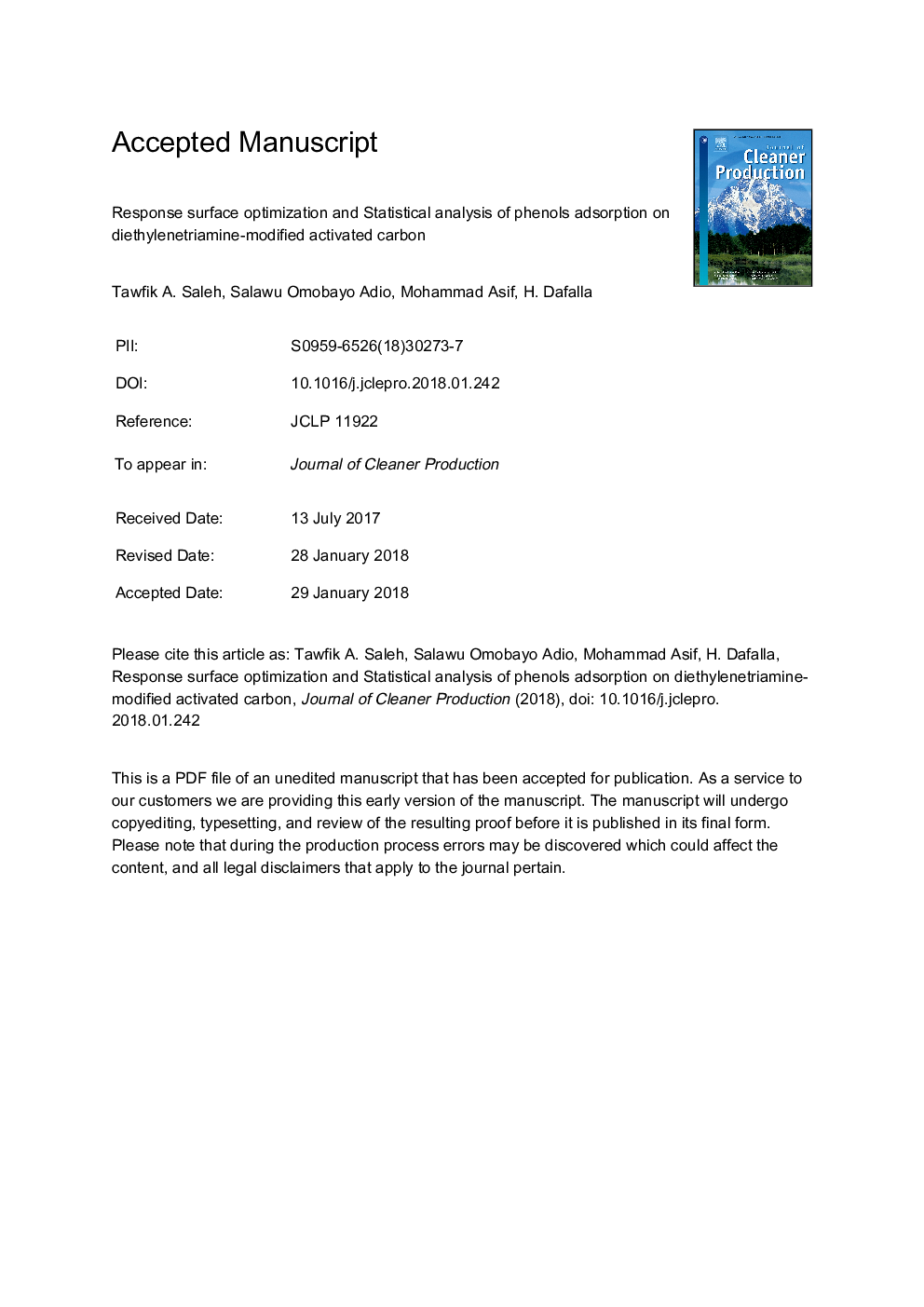| Article ID | Journal | Published Year | Pages | File Type |
|---|---|---|---|---|
| 8097504 | Journal of Cleaner Production | 2018 | 26 Pages |
Abstract
To reduce the consumed chemicals and reagents in experimental work, it is required to implement statistical optimization of the parameters and conditions in evaluating the performance of adsorbents in water treatment. In this work, activated carbon, derived from waste rubber tires, was modified with diethylenetriamine in order to enhance the adsorption efficiency. The structural and morphology of modified activated carbon was characterized using SEM-EDX, BET, and FTIR and subsequently evaluated for its use as an adsorbent for the removal of phenol from the water. The experiments were carried out in accordance with a factorial design. The half factorial design was adopted and the effects of adsorbent dosage, initial concentration, pH, contact time and shaker speed were investigated. The results obtained showed that adsorbent dosage, pH, initial concentration and some interactions between these factors were found to be significant. According to the statistical analysis and optimizations, the best removal efficiency was established at an initial concentration of 200â¯mg/L covering wide pH (3.0-11) with fast uptake at room temperature and shaker speed of 200â¯rpm. The experimental results were also fitted to Langmuir and Freundlich adsorption isotherm. The adsorption results were best fitted to the Langmuir adsorption model with an R2 value of 0.9998. Using this model, the maximum adsorption capacity obtained was 18.12â¯mg/g. The adsorbent was easily separated from the water after the treatment process, demonstrating that it has great potential as a material for water purification.
Related Topics
Physical Sciences and Engineering
Energy
Renewable Energy, Sustainability and the Environment
Authors
Tawfik A. Saleh, Salawu Omobayo Adio, Mohammad Asif, H. Dafalla,
